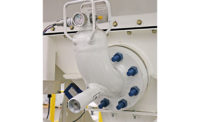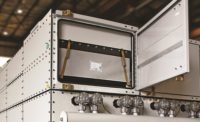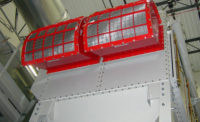Identify & mitigate combustible dust dangers
Know the warning signs

Recognizing dangerous combustible dust situations in manufacturing plants and processing facilities helps you to quickly observe and recognize an unsafe situation in everyday work environments, evaluate whether you and your coworkers are in harm’s way, and decide what steps are necessary to make the area safe.
The need for such vigilance is clear. According to the independent 2019 (Mid-Year) Combustible Dust Incident Report from DustEx Research Ltd., there were 80 dust-related fires, 19 dust-related explosions, 22 injuries and one fatality in the U.S. from January through July 2019.
Rule makers and enforcement
In the U.S., OSHA and National Fire Protection Association (NFPA) regulate combustible dust issues, each with its own area of responsibility. OSHA, together with local authorities, enforces the NFPA’s combustible standards. OSHA’s Combustible Dust National Emphasis Program (NEP) outlines policies and procedures for inspecting workplaces that create or handle combustible dusts that have the potential to cause a deflagration, fire or explosion. OSHA issues fines and citations to facilities that do not comply with the NFPA’s standards and can even order violators to shut down their operations.
What happens in a dust explosion?
A dust explosion occurs when five factors – oxygen, heat (ignition source), fuel (dust), dispersion of dust particles and confinement – come together. This causes a rapid and extreme increase in volume and release of energy, usually with the generation of high temperatures and the release of gases. Removal of any one of these elements prevents an explosion but not necessarily a fire.
A primary explosion is the first point where an explosion occurs and is often an isolated incident. A secondary explosion occurs when the primary explosion pressure disturbs dust that has collected in the workplace, resulting in a much more extensive explosion. Rapid combustion resulting from this combination of factors is known as a deflagration. Think of it as an expanding ball of flame that is rapidly consuming a cloud of dust. If the event is confined by an enclosure, the resulting pressure rise may cause an explosion.
The NFPA classifies the explosibility of dusts using their Kst values ranging from zero to greater than 300. If the Kst value of your dust is greater than zero, you must provide explosion protection on your dust collector. The Kst number is also used to size the explosion protection equipment for the dust collector.
An explosion vent is one such version of protection equipment and opens when the pressure inside the collector reaches a predetermined level that is lower than the design pressure of the dust collector. When the vent opens, the excess pressure and flame front exit to a safe area away from buildings and populated areas. The number of these vents required on a dust collector is determined using the Kst number of the dust and volume of the dust collector that they are to protect.
Spotting the dangers
One of the most important ways to identify possible combustible dust danger is to take a look around. Dust thickness on surfaces of 1/32 of an inch, about the thickness of a dime, is a warning sign. Make sure to check both obvious areas for dust accumulation – like equipment and floors – and hidden areas where dust may build up. Look for dust on and inside ductwork and on ceiling joists. Another key point to remember is that the smaller the dust particle size, the greater the danger or volatility of the explosion.
NFPA 652 requires facility owners to conduct a combustible dust hazard analysis (DHA) to assess risk and determine the necessary fire and explosion protection. Operators can conduct the analysis internally or use an independent consultant. Ultimately, the authority having jurisdiction will review the findings and grant approval.
To determine whether the dust is combustible, manufacturers must have explosibility testing done in accordance with ASTM test methods as stipulated by the NFPA. Unless the dust is completely inert (Kst = 0), explosion protection must be incorporated into the dust collection plan, unless a risk assessment determines otherwise. This DHA must be completed by the fall of 2020 and demonstrate reasonable progress toward completion of the DHA in each of the years approaching the deadline. If you have had a previous fire or explosion, it is a good indicator you may have an existing problem.
Make your facility safer
An important factor in identifying and mitigating combustible dust dangers is to train equipment operators, maintenance personnel and other workers in dust hazard awareness and job-specific safeguards. Employee education should be part of dedicated dust mitigation programs and procedures at your facility. In addition to the dust hazard analysis mentioned above, these should include:
- Combustible dust program: A defined program to deal with hazards in the facility.
- Management of change program: A defined process on how to manage all the changes required to meet the life safety goals set in place by the combustible dust program.
- Process hazard analysis: Required on each process point generating dust in a facility; OSHA will ask for this when investigating combustible dust processes.
- Mitigation of hazard: A plan defining how the above gets rid of the hazard on each process.
- Housekeeping plan: A strategy outlining cleaning processes to keep combustible dust from becoming a problem.
- Maintenance and inspection: An ongoing plan to keep equipment maintained, inspected and in compliance.
Sources:
- Cloney, Chris, 2019 (Mid-Year) Combustible Dust Incident Report – Version #2, DustEx Research Ltd. Retrieved from http://dustsafetyscience.com/2019-Report
- OSHA Factsheet, Hazard Alert: Combustible Dust Explosions https://www.osha.gov/OshDoc/data_General_Facts/OSHAcombustibledust.html
- U.S. Chemical Safety and Hazard Investigation Board, Dust Incidents 2006–2017 https://www.csb.gov/assets/1/17/csb_dust_incidents.pdf?16406
Looking for a reprint of this article?
From high-res PDFs to custom plaques, order your copy today!





